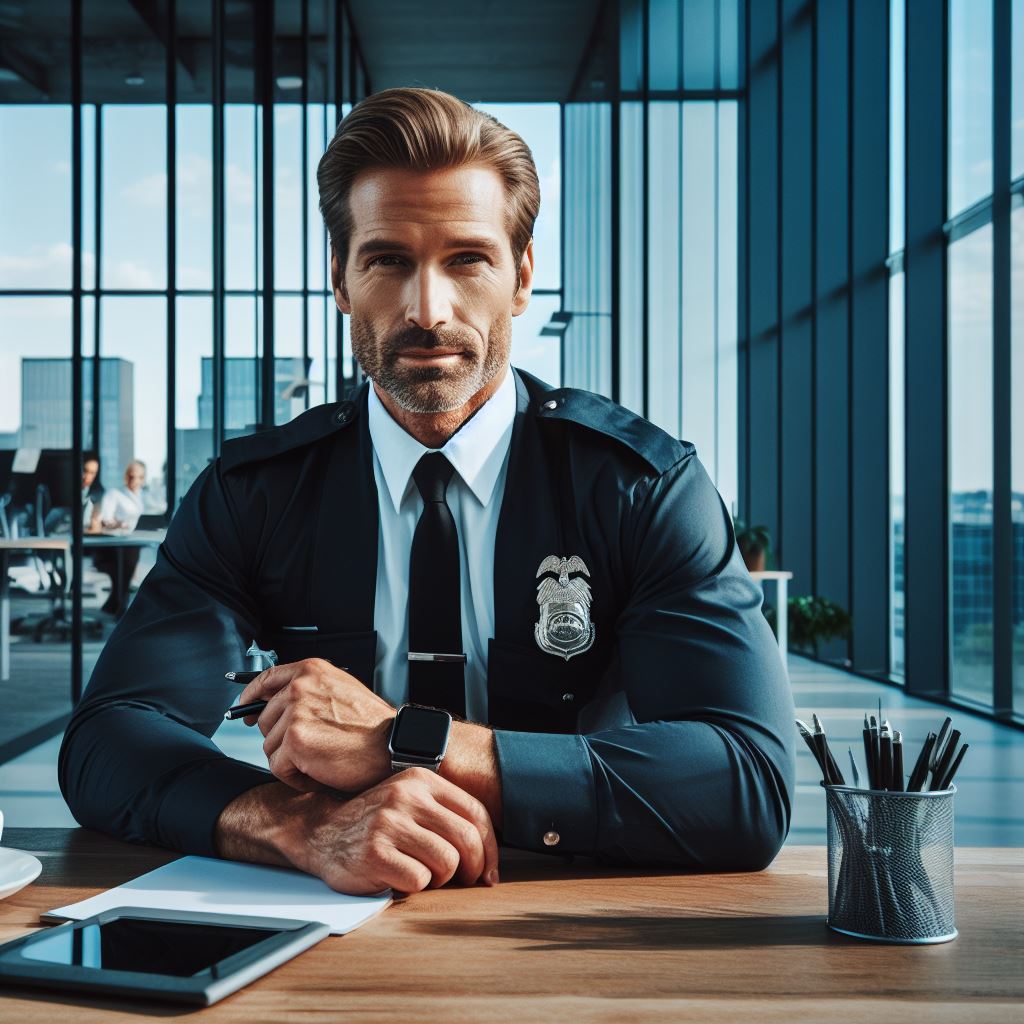Introduction
In the United States, firefighting poses unique challenges in both urban and rural settings. In this article we will discuss the Urban vs Rural Firefighting Challenges.
Whether it’s the bustling cityscape or the vast wilderness, firefighters face distinct obstacles that affect their operations and efficiency.
In urban firefighting, densely populated areas pose a challenge due to limited access and crowded streets.
Firefighters often struggle to navigate through heavy traffic and narrow alleyways, hampering their response time and effectiveness in reaching the scene.
Urban areas are also characterized by high-rise buildings, which present another set of challenges.
Fighting fires in tall structures necessitates specialized equipment and training to tackle higher risks and complexities.
In contrast, rural firefighting comes with its own set of obstacles.
The vastness of rural areas means firefighters must cover greater distances, often relying on volunteer fire departments.
Responding to emergencies in remote locations can lead to significant delays, putting lives and property at risk.
Natural obstacles, such as rough terrains or bodies of water, can hinder access to the fire and limit the availability of water sources.
Additionally, limited resources and outdated equipment in rural areas can further impede firefighting efforts.
Both urban and rural firefighting demand highly skilled personnel capable of adapting to dynamic and challenging environments.
Firefighters must continuously undergo training to stay equipped with the latest techniques and technology to combat evolving fire hazards.
Generally, understanding the challenges faced by firefighters in urban and rural settings is crucial for improving firefighting strategies and ensuring public safety.
By addressing these challenges, resources can be allocated more effectively, and firefighters can overcome the obstacles they face in protecting communities.
Overview of urban firefighting challenges
1. High population density and large infrastructure
Urban areas are densely populated, making it challenging for firefighters to navigate and reach incident sites effectively.
Additionally, the presence of large infrastructure, such as skyscrapers and complexes, adds complexity to firefighting operations.
2. Traffic congestion and limited access to incident sites
Urban areas often suffer from heavy traffic congestion, which can impede firefighters’ response time and hinder access to fire scenes. Limited space and narrow roads further exacerbate this issue.
3. Height and complexity of buildings
Urban areas are characterized by towering buildings, some reaching great heights. Fighting fires in high-rise structures require specialized skills, equipment, and strategies to combat the flames effectively.
4. High-rise fires and vertical rescue operations
Urban firefighters frequently encounter high-rise fires, which pose unique challenges.
Vertical rescue operations, involving the extraction of occupants from elevated locations, demand specialized training and equipment to ensure successful outcomes.
5. Increased hazards due to industrial sites and hazardous materials
Urban environments often house industrial sites and facilities that handle hazardous materials.
Firefighters must possess knowledge and training in handling such substances to minimize risks and protect both themselves and the public.
Overview of rural firefighting challenges
Urban vs. rural firefighting in the United States presents unique challenges that demand different approaches to ensure effective and efficient response.
While urban areas have more resources and infrastructure in place to combat fires, rural regions face several distinct obstacles.
- Vast geographic areas with limited resources: Rural areas often span large territories, making it challenging to cover extensive distances with limited staffing and equipment.
- Limited access to incident sites due to remoteness: Rural communities are often located in remote or isolated areas, making it difficult for fire departments to reach incident sites quickly.
- Lack of hydrant systems and water supply: Rural areas typically lack a reliable hydrant system, forcing firefighters to transport water to the scene or rely on alternative water sources.
- Wildland fires and their potential impact on communities: Rural regions are more prone to wildland fires, which can spread rapidly and endanger nearby communities, necessitating additional firefighting resources.
- Long response times and isolation: Due to the vast distances and limited resources, rural fire departments often experience longer response times, increasing the risk of greater fire damage or loss of life.
Rural fire departments must overcome these challenges by adopting innovative strategies and leveraging available resources effectively.
Strategies to tackle rural firefighting challenges
Implementing regional cooperation
Rural fire departments can collaborate and form regional partnerships to optimize the sharing of resources, knowledge, and expertise.
Training for diverse incidents
Rural firefighters must receive comprehensive training to handle various emergencies, including wildland fires, structural fires, and medical emergencies, given the limited resources.
Improving communication networks
Strong communication systems, such as reliable radio networks and advanced technology, enhance coordination among rural departments during emergencies.
Investing in water supply infrastructure
Rural communities should prioritize investing in hydrant systems, alternative water sources, and tanker shuttles to improve their firefighting capabilities.
Enhancing community awareness and prevention:
Education programs can play a vital role in rural areas by raising awareness about fire prevention, safe practices, and the importance of early reporting.
Moreover, technological advancements and aerial firefighting resources can contribute to overcoming some rural firefighting challenges.
Drones equipped with thermal imaging cameras can aid in early fire detection and real-time assessments of fire spread in vast areas.
Transform Your Career Today
Unlock a personalized career strategy that drives real results. Get tailored advice and a roadmap designed just for you.
Start NowEssentially, rural firefighting in the United States encounters challenges due to vast geography, limited resources, restricted access, and wildland fires.
To tackle these challenges, regional cooperation, comprehensive training, improved communication networks, infrastructure investments, and community awareness are crucial.
By continuously evolving strategies and leveraging technology, rural fire departments can enhance their capabilities and protect their communities effectively.
Read: Fire Academy Training: What New Recruits Can Expect
Comparison of equipment and training
When it comes to firefighting, the challenges faced in urban and rural areas differ significantly. These disparities are evident in the equipment used and the training required by firefighters.
Urban firefighting
- Specialized equipment is crucial for urban firefighters, especially when dealing with high-rise operations.
- Urban firefighters need tools for search and rescue operations, as well as specific equipment for ventilation purposes.
- Due to the complexity of urban settings, firefighters must be trained in handling hazardous materials and structure fires.
Rural firefighting
- In contrast to urban areas, rural firefighting focuses more on wildland firefighting.
- Rural firefighters require off-road vehicles to access remote locations and navigate uneven terrain.
- Water shuttle systems are commonly used in rural firefighting to transport water to the fire scene.
The differences in equipment are evident, but the training and certifications for urban and rural firefighters also vary.
Differences in training and certifications
Urban firefighters undergo specific training to tackle the unique challenges faced in densely populated areas.
- They receive extensive training in urban search and rescue techniques due to incidents like collapsed buildings.
- Urban firefighters also receive specialized hazardous materials training to handle potential chemical emergencies.
- Moreover, urban firefighters are trained in ventilation techniques to prevent fire spread in confined spaces.
In contrast, rural firefighters focus on different aspects due to the nature of their firefighting responsibilities.
- Wildland firefighting training is a central component of rural firefighter certification.
- Rural firefighters learn techniques to combat wildfires in remote areas, including wildfire behavior and containment strategies.
- They are also trained to operate off-road vehicles and utilize tools suitable for wildland firefighting scenarios.
Despite these disparities, both urban and rural firefighters play essential roles in protecting lives and property.
Urban firefighters often face challenges related to densely populated areas, while rural firefighters battle the expanses of nature.
It is important to recognize that each firefighting context requires unique skills and resources.
Most importantly, urban and rural firefighting present their own sets of challenges, which are reflected in the equipment used and the training undertaken by firefighters.
Understanding the differences between urban and rural firefighting is crucial in order to ensure the safety and effectiveness of firefighters in all environments.
By providing specialized equipment and training, firefighters can be better equipped to overcome the challenges they face, whether in urban or rural areas.
Read: Mental Health and Firefighters: Addressing PTSD Risks

Learn More: Historical Evolution of Detectives in the United States
Challenges related to recruitment and retention
Urban firefighting
Urban firefighting in the U.S. presents unique challenges when it comes to recruiting and retaining firefighters.
The high competition for limited positions means that aspiring firefighters need to excel in a demanding selection process, both academically and physically.
The physical requirements for urban firefighting are rigorous and demanding, ensuring that only the most capable individuals are selected.
In urban areas, the competition for firefighting positions can be intense.
With a large population and often only a limited number of positions available, aspiring firefighters need to stand out from the crowd.
The selection process typically involves rigorous written exams, interviews, and physical fitness tests.
This demanding process ensures that only the best candidates are chosen for training and eventually, for joining the ranks of urban firefighters.
Both urban and rural firefighting face unique challenges when it comes to recruitment and retention.
Urban firefighting requires individuals who are not only physically fit and capable but also able to excel in a highly competitive selection process.
Rural firefighting, on the other hand, struggles to attract and retain volunteers due to the remote nature of many areas and the significant time commitments involved.
Rural firefighting
In Rural firefighting faces recruitment challenges due to remote locations and limited resources, hindering volunteer attraction and retention.
Urban firefighting requires physically fit individuals who excel in a competitive selection process.
In rural areas, recruitment efforts involve partnerships with local entities to raise awareness about volunteering.
Fire departments explore flexible schedules to accommodate diverse commitments.
Showcase Your Business Today
Reach thousands of readers actively exploring professional services. Publish your business profile and grow your audience now.
Publish NowUrban fire departments focus on fair and inclusive recruitment processes, offering support for recruits to meet physical requirements.
Despite challenges, firefighting, crucial in urban and rural settings, relies on dedicated and brave professionals protecting communities.
Ongoing efforts address recruitment challenges, ensuring vital services continue across the United States.
Read: Advancements in Firefighting Gear: U.S. Innovations
Impact of Budget and Funding
One significant factor that differentiates urban firefighting from rural firefighting in the United States is the allocation of budget and funding.
The availability and amount of financial resources greatly affect the capabilities and operations of fire departments in both settings.
Urban Firefighting: Higher Funding
In urban areas, fire departments generally benefit from higher funding levels, allowing them to allocate resources more effectively.
This higher level of funding enables urban fire departments to maintain and upgrade their firefighting equipment regularly.
Frequent equipment maintenance ensures that apparatus and tools are always in good working condition.
This is crucial in densely populated urban areas, where the risk of fires and emergencies is higher.
Well-maintained equipment increases response efficiency and reduces the likelihood of equipment failure during critical situations.
Moreover, urban fire departments can invest a significant portion of their budget in comprehensive training programs for their firefighters.
Rigorous training equips urban firefighters with the necessary skills and knowledge to handle complex emergencies effectively.
Urban departments can also afford to hire additional personnel to meet the demands of their densely populated jurisdictions.
The higher funding allows for adequate staffing levels, reducing response times and ensuring there are enough firefighters to handle multiple incidents simultaneously.
Rural Firefighting: Limited Budgets
In contrast, rural fire departments face the challenge of limited budgets, which can result in resource constraints and compromised operations.
With constrained financial resources, rural departments often struggle to maintain and upgrade their equipment regularly.
The limited budget prevents rural fire departments from investing in modern firefighting apparatus and tools, making it difficult to keep up with technological advances.
Outdated equipment can hinder firefighting efforts, reducing efficiency and potentially endangering firefighters’ lives.
Rural departments heavily rely on mutual aid agreements with neighboring fire departments as a cost-effective way to access additional resources.
These agreements allow for assistance and cooperation during larger incidents, compensating for the lack of resources within rural jurisdictions.
Moreover, financial constraints often translate to inadequate training opportunities for rural firefighters.
Limited training can hinder their ability to respond effectively to emergencies, especially those involving hazardous materials or complex rescue scenarios.
Due to budget limitations, rural departments may also struggle with maintaining adequate staffing levels.
Limited personnel can lead to longer response times and challenges in handling multiple incidents simultaneously.
The impact of budget and funding on urban and rural firefighting is significant. While urban fire departments benefit from higher funding, rural departments face numerous resource constraints.
Allocating sufficient financial resources to rural departments is essential to ensure the safety of both firefighters and the communities they serve.
Read: Key Skills Every U.S. Firefighter Must Possess
Conclusion
Urban and rural firefighting both face unique challenges that require collaboration and mutual aid agreements to address.
It is important to appreciate the diverse roles and skills of firefighters in both settings.
Recapping the challenges faced by urban and rural firefighting, urban areas deal with high population density, tall buildings, and congested streets that make access and ventilation difficult.
Rural areas, on the other hand, struggle with limited resources, vast distances, and a lack of hydrants or water supply.
The importance of collaboration and mutual aid agreements cannot be overstated.
In urban firefighting, the involvement of multiple departments is crucial to effectively control and extinguish fires, as well as to handle other emergency situations.
Similarly, rural areas heavily rely on neighboring departments to provide additional personnel and equipment that may be needed to combat large fires or manage major incidents.
Appreciating the diverse roles and skills of firefighters in both urban and rural settings is essential.
Urban firefighters are often trained in specialized areas such as high-rise firefighting, hazardous materials response, and urban search and rescue.
Rural firefighters, on the other hand, may take on a more versatile role, requiring skills in wildland firefighting, structural firefighting, and emergency medical care.
To summarize, urban and rural firefighting are distinct but interconnected.
Collaborative efforts, through mutual aid agreements, are vital to overcoming the challenges faced by both settings.
Appreciating the unique skills and roles of firefighters in each environment allows for a more effective and efficient response to emergencies, ultimately ensuring the safety and well-being of communities.
[E-Books for Sale]
The Big Book of 500 High-Paying Jobs in America: Unlock Your Earning Potential
$19.99 • 500 High-Paying Jobs • 330 pages
Explore 500 high-paying jobs in America and learn how to boost your career, earn more, and achieve success!
See All 500 High-Paying Jobs of this E-Book
1001 Professions Without a Degree: High-Paying American Jobs You Can Start Now
$19.99 • 1001 Professions Without a Degree • 174 pages
Discover 1001 high-paying jobs without a degree! Unlock career tips, skills, and success strategies for just $19.99!




